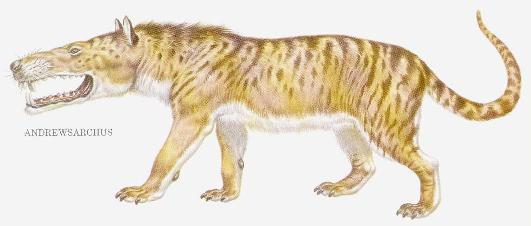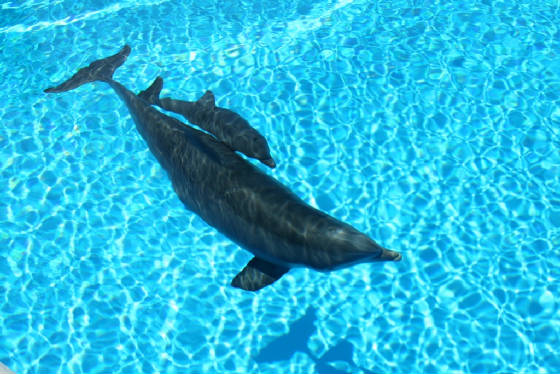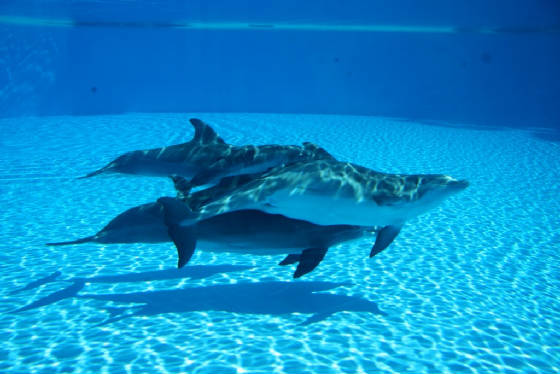|
DOLPHIN EVOLUTION

About
95 million years ago Mesonix, the ancestor of today's dolphin, appeared on Earth. It was a terrestrial animal that went into
the water to feed. Mesonix had front and hind limbs containing bones to support its weight. It was covred with hair. Over
the next 30 million years Mesonix began to become more adapted to life in the water. Perhaps changing environmental conditions
on the earth at that time prompted this adjustment in life style. Forelegs became pectoral flippers. (The bone structure in
the pectoral fins of today's dolphin is a remnant of its life on land.) Mesonix's hind legs began to disappear. (Today,
the dolphin has vestigial hind limbs in the form of rod-shaped pelvic bones, perhaps remnants of hind limbs used for
land life.) Its hair disappeared because hairless skin is more hydrodynamic and is not needed to warm an animal
living in the water.

After millions of years an air-breathing mammal modified for life in the sea had evolved into the dolphin. As a result of evolution,
its nostrils slowly migrated from its nose (or rostrum) to the top of its melon (head), making it easier to breath when swimming
or resting partly under water. Unlike seals and walruses which breed on land and feed in the water, today dolphins
remain almost entirely in the water for all life functions. As dolphins are essentially "weightless" in the water, their
bones do not have to carry the weight of those of land animals. Thus, the bones of a dolphin are relatively lighter than land
mammal bones.

The
Tokyo Institute of Technology recently reported developing a new way to look at an animal’s genetic history using DNA
tracking. The DNA sequences they studied were called short interspersed elements, or SINEs, and long interspersed elements,
or LINEs. These elements, once found in an animal’s genome do not disappear and will point to its evolutionary origins.
The genetic evidence from this technology indicates that dolphins are closely related to cows, antelopes, giraffes, and that
pigs may be their closest relatives, as they all have the same SINEs and LINEs. The dolphin’s 3-chambered stomach
functions in the same way as the 4-chambered stomach of a cow, perhaps providing additional evidence of this evolutionary
link. Additional work in genetics along this line is being carried out by Dr. David Busbee and his team at Texas A & M
University. Through Dr. Busbee's team's work it has been discovered that dolphins and humans share many chromosomal similarities
and that dolphin and human genomes are basically the same. Every chromosome in the dolphin has a comparative chromosome in
the human.

Site Content
Understanddolphins.com contains information condensed from a number of reputable technical sources,
peer reviewed journal articles, and respected dolphin research facilities, as well as from my personal experiences and
observations as a dolphin VIP Tour Guide and Educator.
I have made every attempt to support the information presented in this site with video and still
photographic images. On a regular basis I plan to produce more of these images and will continue to update the site with these
as well as with any new and scientifically verified information which becomes available.
|



